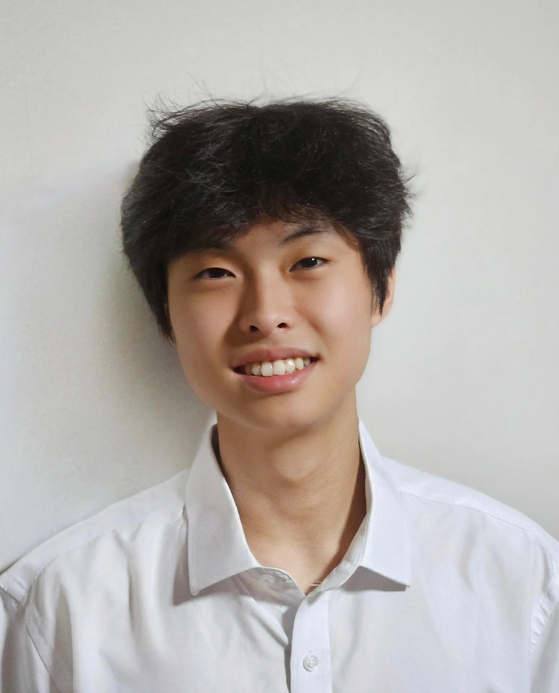[Student Essay] Lessons in Chemistry

J Yoon Noh, Seoul International School 12th grade
By J Yoon Noh, Seoul International School 12th grade
On the 4th of this month, the Nobel Prize in Chemistry for 2023 was announced. However, due to a significant pre-announcement leak of the list of laureates, there seems to less attention on what specific research led to the Nobel Prize in Chemistry this year. As a student studying chemistry, I find this disappointing.
The Royal Swedish Academy of Sciences has decided to award the Nobel Prize in Chemistry 2023 to Moungi G. Bawendi (Massachusetts Institute of Technology), Louis E. Brus (Columbia University), and Alexei I. Ekimov (Nanocrystals Technology Inc) “for the discovery and synthesis of quantum dots.”
Quantum dots are nanoparticles so tiny that their size determines their properties. This principle is closely related to what we commonly see in QLED (quantum dot light-emitting diode) televisions and LED lamps. They also hold great potential in the medical field. By making cancer tissues within the human body emit fluorescent light, they can guide surgeons when they remove tumor tissue.
However, I must confess that what truly captured my interest was not so much the scientific significance as the pictures introduced in the related materials.
When we placed different-sized substances (nano-semiconductors) of the same molecule into small test tubes and exposed them to ultraviolet light, each test tube emitted fluorescent light in different colors, like a rainbow. The pictures reminded me of a set of seven pretty neon highlighters in my classmate’s pencil case. The image of using quantum dots to express proteins in red and green in a mouse’s organs appeared like a masterpiece by a well-known artist, depicted with dots and lines.
As my thoughts reached this point, memories of a recent bismuth project I had undertaken came to my mind. Even when I first watched YouTube videos about bismuth crystals, I couldn’t help but think that the crystalline structure of the material, which changes with temperature, environment, and wavelengths, creates objects that resemble one gorgeous piece of art. Perhaps my fascination with such things dates back to my childhood when I used to pester my parents to buy me all sorts of oddly shaped and colored rocks and crystals from souvenir stores in US national parks. Bismuth is a chemical element with atomic number 83, and its crystallization is influenced by external factors such as temperature and vibrational frequencies. I had always wondered how my favorite songs from various musical genres and wavelengths might affect the crystallization of bismuth, and I actually had the experience of conducting a research project on this topic.
While this year’s Nobel Prize research focused on the influence of light on molecular observation, my bismuth crystallization project aimed to explore the effects of sound waves (vibrations) on the crystallization process. Introducing sound waves into the bismuth crystallization process was praised as a highly innovative approach. Crystallization is not just a scientific phenomenon but, in my view, also an artistic expression of nature. My “Bismuth Symphony” project can be seen as a symphony composed of the meeting of science and art. In the twinkling facets of bismuth, you can witness the harmony of light, sound, and matter. This exploration is meaningful not only in understanding the science behind crystallization but also in appreciating the inherent beauty and melody within the process.
Many people don’t have a fondness for chemistry. They often perceive it as a dull process filled with tedious memorization. It’s as if you have to commit the periodic table to memory and squint through a microscope until your eyes are tired or be stuck in the lab doing research endlessly. Yes, perhaps that’s what chemistry may seem like. However, an interest in chemistry can start from something as simple and close to home as someone like me who used to enjoy the variously shaped and colored rocks from national parks. It might just be a tiny spark that ignites in the everyday and familiar aspects of nature.
The Nobel Prize in Chemistry laureate for 2019, Akira Yoshino, responded to the interview question, “how to develop an interest in chemistry?” by mentioning that be began to develop an interest in chemistry after reading the book “Chemical History of Candle,” which he had seen when he was 9 years old. He said that reading this book changed the way be viewed candles, and from that point on, his fascination with chemistry began.
To foster more students with an interest in chemistry in South Korea, it is necessary to expose them to environments where they can engage in various experiences from a young age. When I was young and living in the United States, my mom used to take me to the children’s museum every Saturday. No matter which State I visited or where I lived, there was always a children’s museum nearby, and I spent entire days there, engaging in various hands-on experiences. I learned the laws of inertia by riding on spinning chairs. I colored pictures using litmus paper and created a boat powered by toothpaste spreading in water.
After moving to South Korea, I found it disappointing that there was very few neighborhood children’s museums. I missed the enjoyment of my Saturdays. There should be more spaces in South Korea where young students can engage in various hand-on experiences in science. If it is difficult to establish new children’s museums, utilizing spaces of local community service centers to provide experiential programs for children could be a solution.
These experiences will drive various interests in young Korean students regarding science, and I dream that these interests will grow and lead to our first Nobel Prize laureate in the field of chemistry soon.










with the Korea JoongAng Daily
To write comments, please log in to one of the accounts.
Standards Board Policy (0/250자)